First published October 2019 | Words and photos by Vietnam Coracle | 13 comments
This post was last updated 6 years ago. Please check the comments section for possible updates, or read more on my Updates & Accuracy page.
INTRODUCTION | GUIDE | MAP | RELATED POSTS
Riding by motorbike in and out of Vietnam’s two largest cities, Saigon (Ho Chi Minh City) and Hanoi, can be a miserable experience. The city centers, suburbs, and surrounding industrial zones are often extremely congested, chaotic, polluted, dangerous, and ugly. Getting in or out of Saigon and Hanoi by motorbike takes about an hour (or even two). What’s more, these horrible, busy, polluted rides usually bookend most travellers’ road trips in Vietnam, thus taking the shine off the beginning and end of an otherwise memorable experience. One way to avoid (or, at least, reduce) the discomfort of entering and exiting Saigon and Hanoi by motorbike is to time it right. Certain times of day (and night) are better for traffic congestion and general road-related stress. On this page, I’ve written about ways to combat the misery of riding in and out of Saigon and Hanoi by motorbike, including the best times of day to exit and enter, and other alternative solutions.

Exiting & entering Saigon & Hanoi by motorbike is much easier if you choose the right time of day
[Back Top]
BEST TIMES OF DAY TO RIDE IN/OUT OF SAIGON & HANOI
Below is my guide to exiting and entering Saigon and Hanoi by motorbike. I’ve organized this guide into several sections: a general description of what’s it’s like to ride in and out of Saigon and Hanoi by motorbike; a guide to the best times of day to exit and enter the cities; suggestions of other ways to avoid riding through the congested and polluted suburbs; and a map of the extent of the industrial sprawl of Vietnam’s two largest cities. Please note that I have not included specific routes in/out of the cities, because most of my Motorbike Guides feature this on their maps. (For more useful guides like this one, see Related Posts.)
Click an item below for details:
CONTENTS:
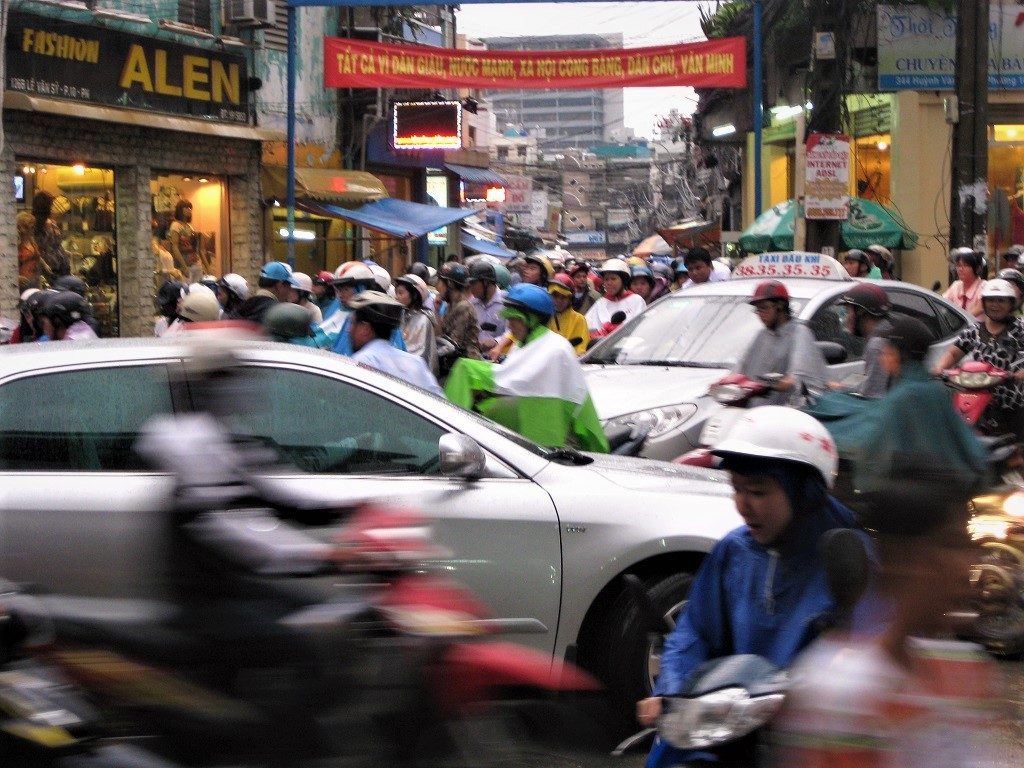
Avoid this kind of traffic congestion by exiting/entering Saigon & Hanoi at the best times of day
MAP:
The Urban & Industrial Sprawl of Saigon & Hanoi
This map is a very rough representation of the limits of Saigon and Hanoi’s congested, polluted, bleak and grim-to-ride urban and industrial sprawl. The point is to show a general radius of how far you can expect the grimness to last, and at which point you can expect things to start getting better. Obviously, this is a very subjective map: my idea of where things are ‘bad’ and where they get ‘better’ may be very different from other riders. The point is just to give riders an idea of what to expect. Zoom in on either of the two cities in the map below to see the shaded areas of urban and industrial sprawl:
View in a LARGER MAP
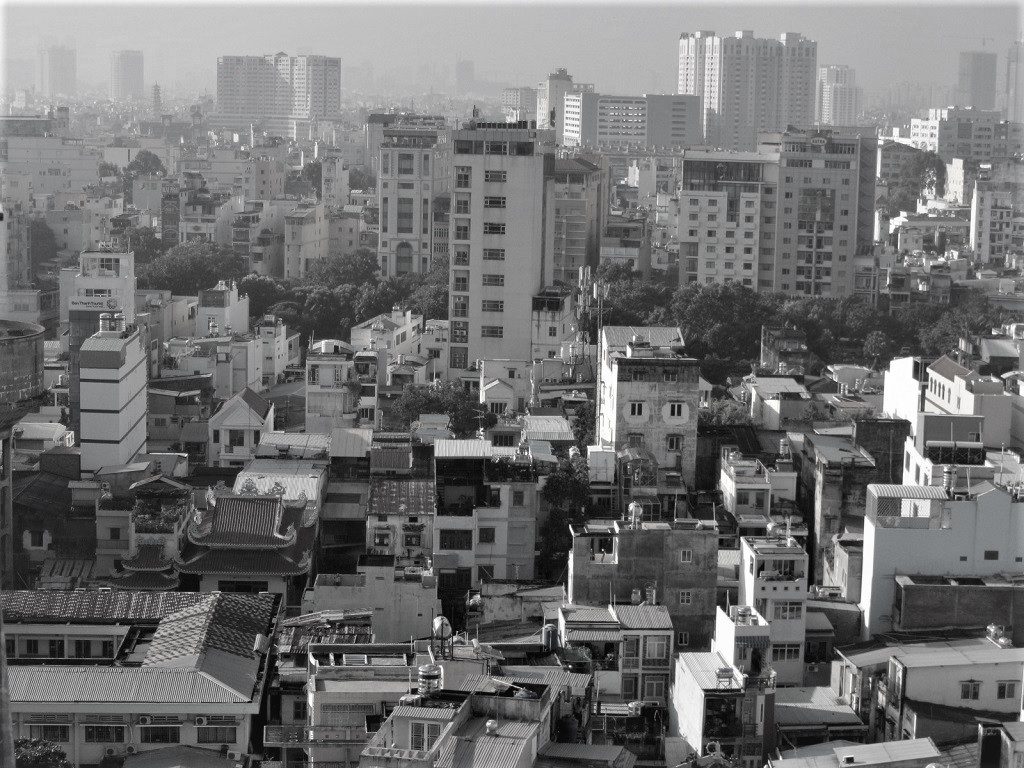
Sagion & Hanoi are quickly becoming mega cities with a huge urban & industrial sprawl
Why Exiting & Entering Saigon & Hanoi is Horrible:
The following paragraphs are a very subjective account describing my (mostly negative) feelings about the ride in/out of Saigon and Hanoi by motorbike – something which I’ve done on hundreds of occasions over the last decade:
If you’re unfortunate enough to exit or enter Vietnam’s capital or commercial hub during peak hours or via main arteries, you may have a miserable experience and impression of the cities. Indeed, even now that I’ve learned to leave and return at optimal times of the day and on less congested roads, I still struggle to come to terms with how ghastly it can be. Vietnam’s biggest cities have an extraordinary buzz – a pulse and a rhythm and a thirst for everything that urban living has to offer. New York, London, Tokyo don’t come close to matching the frenetic energy and hyperactivity of Saigon and Hanoi, especially during the rush hours. This quality is something that has always appealed to me about living in Saigon or Hanoi: at peak times these cities appear to be so obviously the centre of the world; why would you want to be anywhere else? But there’s another side to all this, which becomes apparent when you have to ride across one of the cities and continue through their sprawling industrial suburbs, in order to reach a modicum of fresh, clean air, natural surroundings, greenery, peace and quiet.
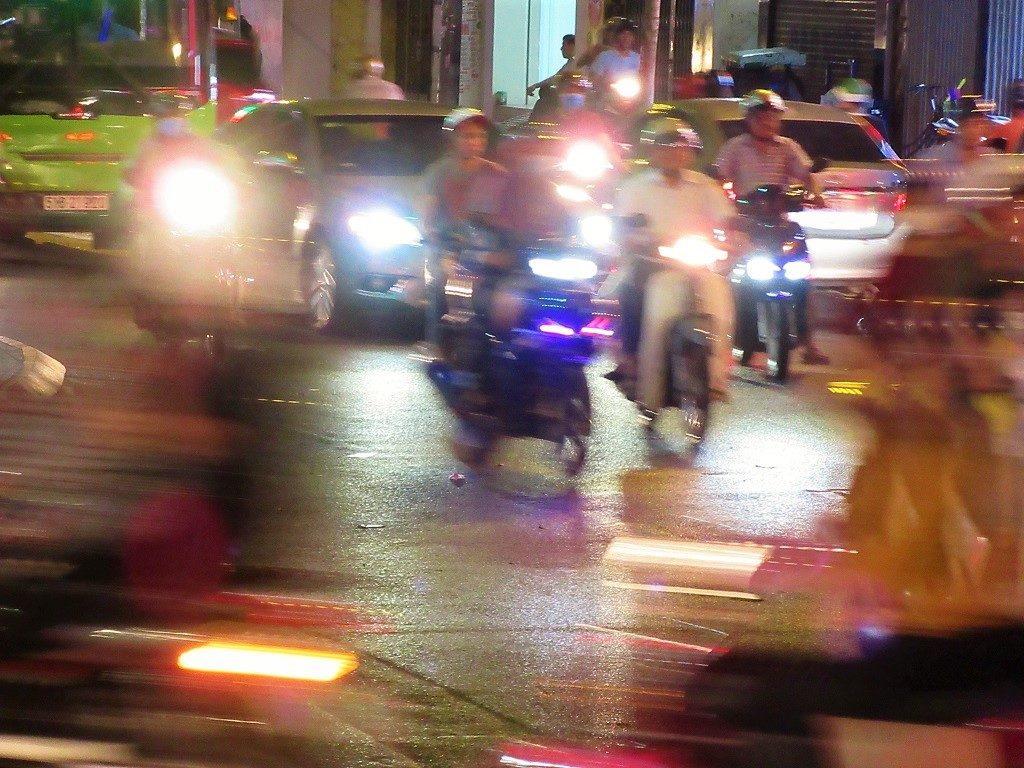
Saigon & Hanoi have an extraordinary pace, energy & pulse that puts other cities to shame

Saigon’s impressive new skyline belies the inadequacy of its infrastructure to deal with increased traffic & pollution
The 1-2 hour ride (depending on the route, time of day, and weather conditions) in/out of Saigon or Hanoi lays bare some of the worst aspects of mass urban living and big industry. In the space of an hour or two you’ll witness (among countless other things): litter, pollution, poverty, inequality, chaotic road discipline, noise, dust, and environmental destruction. (Not that any of these problems are unique to Vietnam, of course.) To give just a few examples: I took a photo of my face, my pores blackened with soot, after I had ridden from Hanoi to Hai Phong for the very first time – god knows what my lungs might have looked like (see the image below); Around the industrial zones between Saigon, Bien Hoa, and Vung Tau, where factories (including one owned by the Taiwanese giant, Formosa, who, in 2016, were responsible for dumping toxic industrial waste into the East Sea, thus poisoning the ocean, killing a hundred tonnes of fish, and destroying the livelihood of thousands of fishing families) spew foul-smelling, chemical-laden fumes into the grey sky, the air is barely breathable and all surfaces are covered in a layer of sinister silver dust; And how many dozens of people and animals have I witnessed run-over or caught in collisions with trucks, buses, cars and motorbikes whizzing through the industrial suburbs as if there were no obstacles on the road.
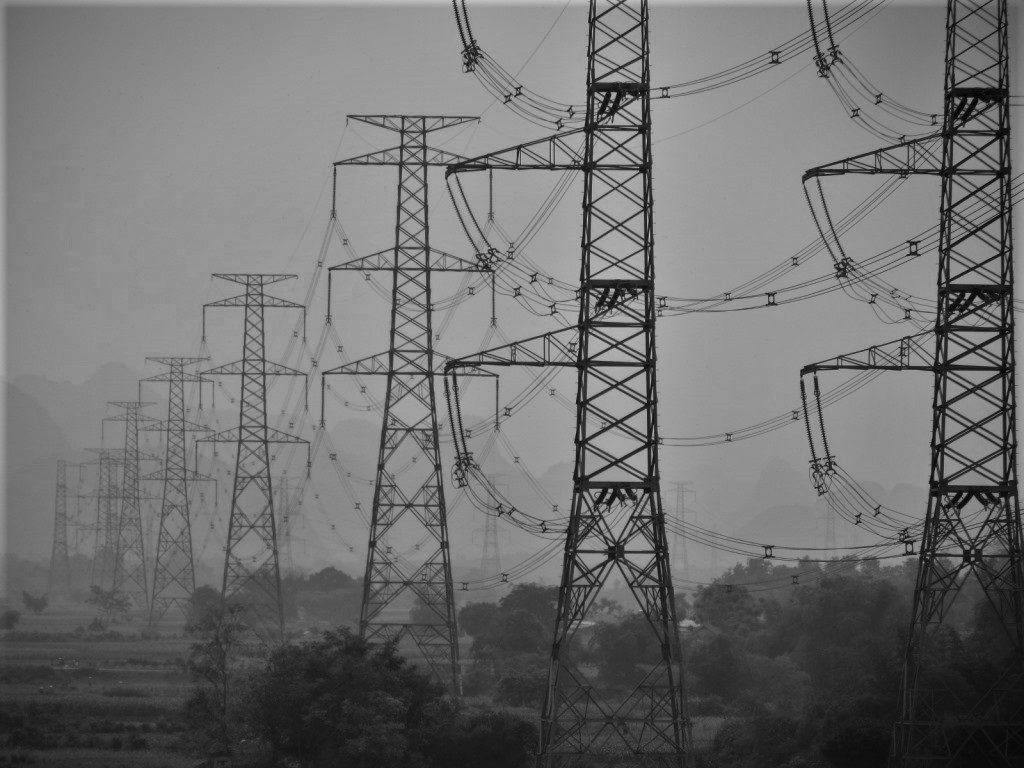
Both Saigon & Hanoi are surrounded by vast industrial zones & poisonous air

My face, covered in soot, after riding through Hanoi’s industrial outskirts
It’s true, however, that some riders find the experience exhilarating, or at least interesting. I did, too. For several years when I started riding in Vietnam, I enjoyed the density of life and industry, the tangled traffic and the evidence of a nation on the move, undergoing great transformation, in the midst of its industrial revolution. But those charms are limited and have, over time, worn off for me. These days, it’s a psychological battle just to keep my head down, concentrate on the road and grind it out for an hour or two, not taking myself or my surroundings too seriously, ignoring the rising feeling that homo sapiens is a cancer eating away at the Earth, that industrialization doesn’t have an endgame, and that nothing makes any sense……before, finally, reaching some fresh air and greenery. Then, the road trip can really begin.

Congestion in Saigon & Hanoi is getting worse & riding a motorbike through it isn’t very enjoyable
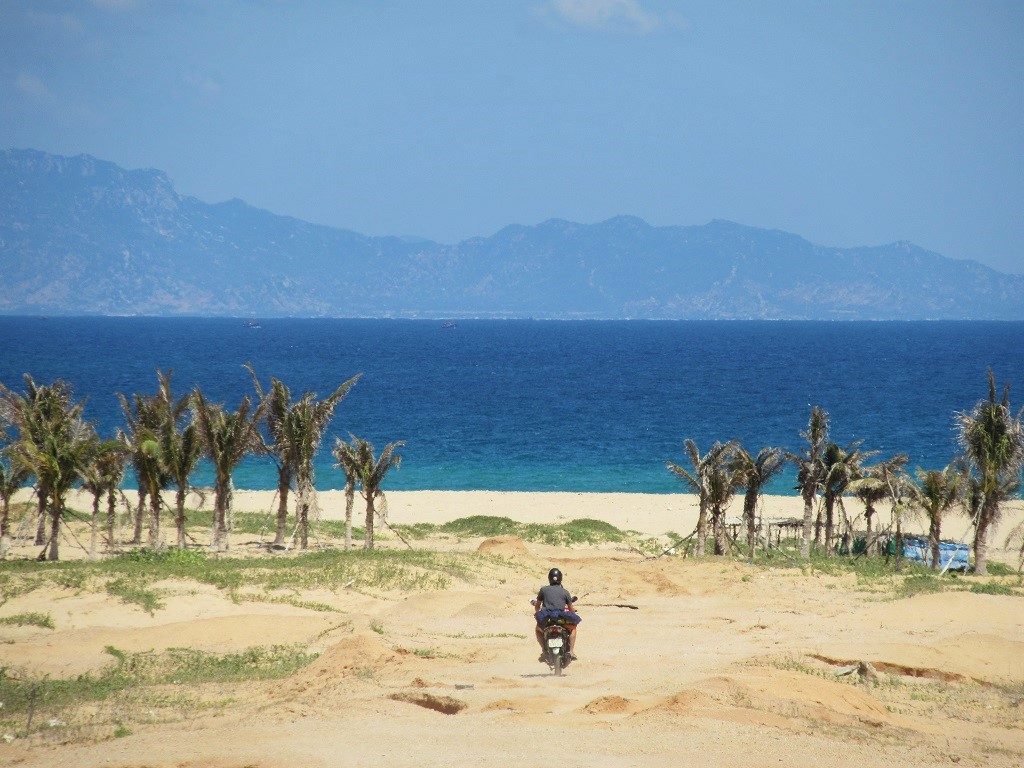
This is what you want & this is why you ride a motorbike in Vietnam
Best Times to Exit & Enter Saigon & Hanoi:
The answer to the question, ‘What is the best time of day to exit/enter Saigon and Hanoi by motorbike?’, is fairly straightforward, but also needs some explaining. Below are the best times to ride in/out of Saigon and Hanoi on any weekday (with the exception of those that fall on a public holiday). Click a time to read more about it:
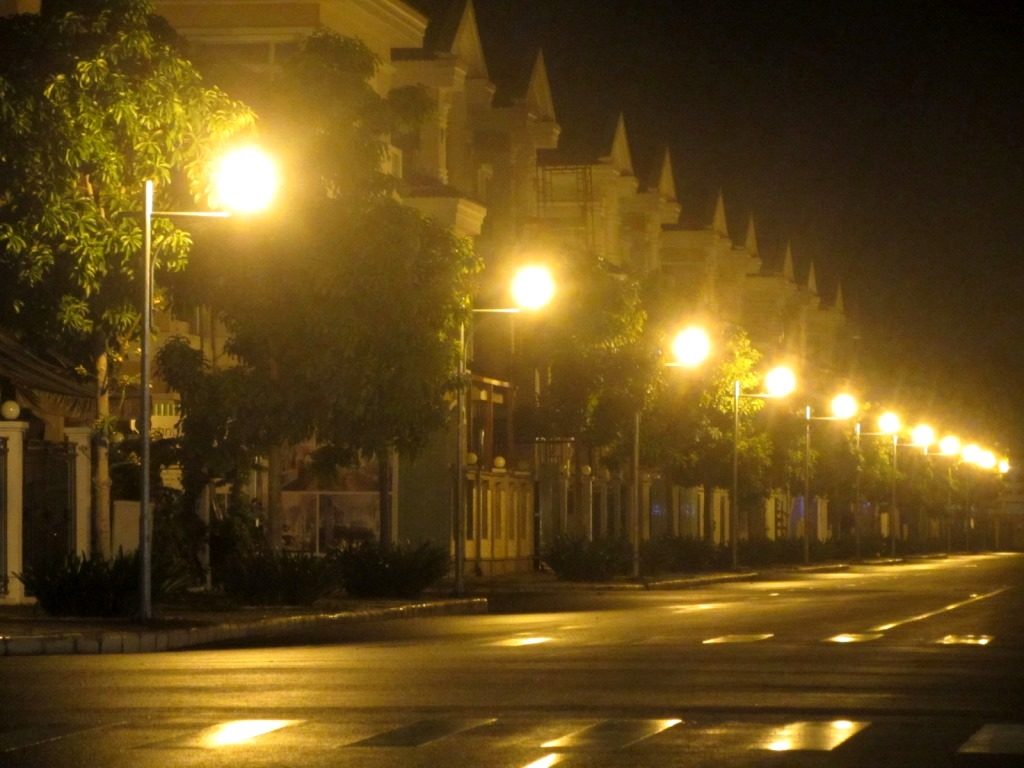
At certain times of the day in Saigon & Hanoi the streets are relatively empty & easy to ride
9.00pm→5.00am: By far the best time to ride in or out of the cities and their surrounding industrial sprawl is late at night or early (really early) in the morning. Exiting or entering the cities anytime from 9pm to 5am will massively reduce the congestion, air-pollution, and driving stress of the journey. This is because these times fall outside of the majority of working hours (meaning there’s no commuter traffic and most of the factories aren’t spewing toxic fumes into the air). What’s more, there are fewer trucks on the roads. However, this last point is only true to a certain extent, because many container trucks ride through the night (either by contract or specifically to avoid the busier daytime roads). Given the choice, I would almost always leave/arrive in Saigon and Hanoi late at night or early in the morning. When it comes to traffic and air quality, there’s simply no better time. For example, I often leave Saigon at 4am, and by 5am I’m clear of the industrial suburbs, and by 6am I’m at the beach or in the Mekong Delta. Likewise, I often leave the Mekong Delta or the beach at 9pm and I’m be back in Saigon by 11pm or midnight.
But there is one drawback to riding at these times. Aside from the obvious effort of either staying up late or waking up early, a major concern for some riders is riding in the dark. Without daylight, it’s harder to see potential hazards on the road, such as potholes, wandering pedestrians, unlit vehicles (not uncommon in Vietnam), or animals. You’ll need to decide for yourself whether you feel confident riding in the dark or not.
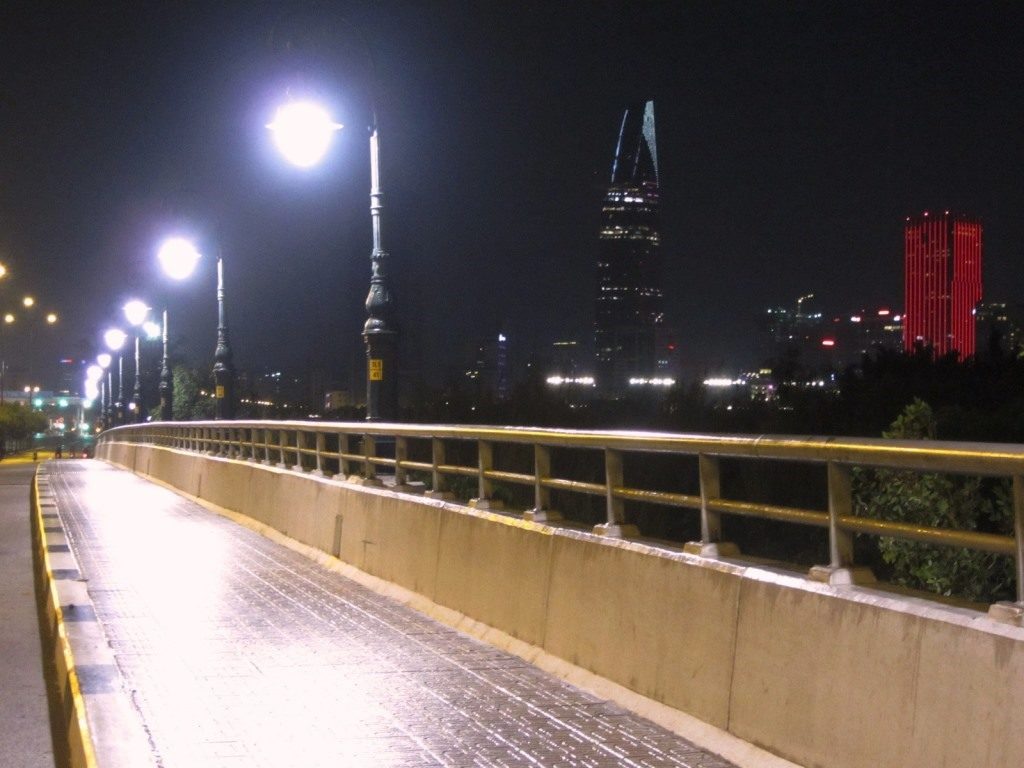
If you ride in/out of Saigon & Hanoi during the hours 9pm-5am you’ll likely have empty streets
11.30am→2.00pm: If night riding is not your thing, there is another time period that’s pretty good for exiting/entering Saigon and Hanoi. The middle of the day, roughly between 11.30am to 2.00pm, is an extended lunch break for most Vietnamese workers, including truckers. This means that large vehicles, cars, and commuters on motorbikes, generally stop for a long meal and a nap, leaving the roads relatively quiet. During this time it’s just about possible to sneak in/out of the cities before things get going again. It’s nowhere near as reliable as riding during the night, but it’s a decent window of opportunity, and many riders understandably prefer it.
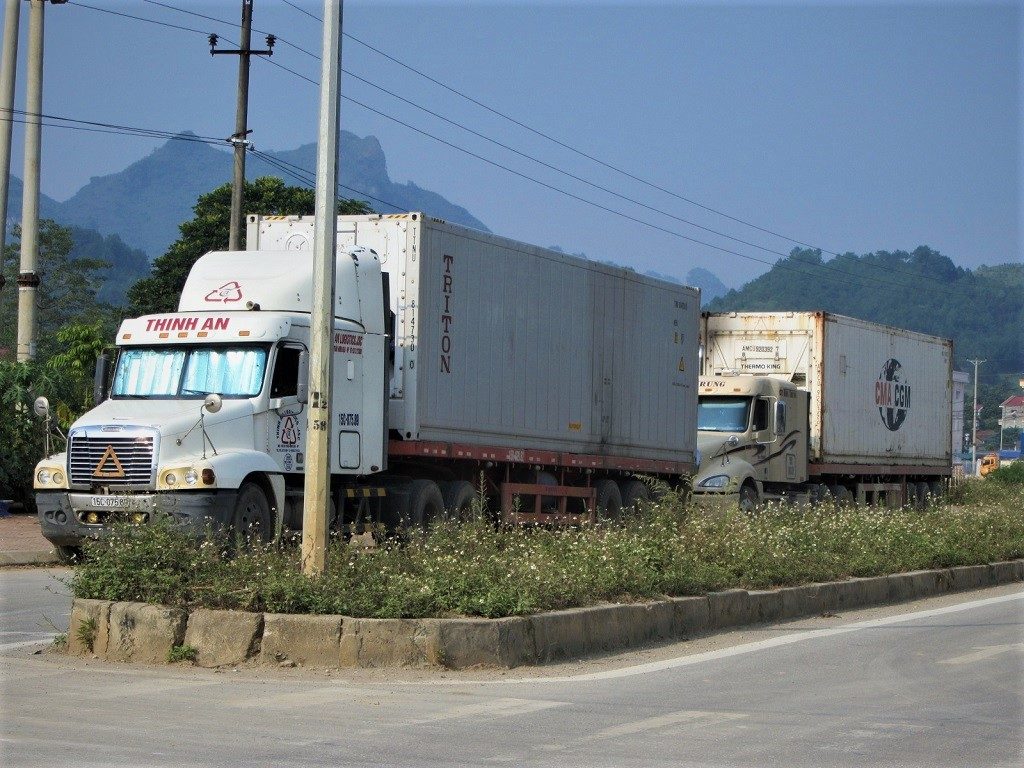
Between 11.30am-2.00pm most people (including truckers) take a lunch break, leaving the roads quiet
Other Considerations: Finally, there are a couple of other factors to bear in mind. Remember that it takes between 1-2 hours to clear the city and industrial suburbs. Therefore, allow yourself enough time within the two riding windows listed above to complete to ride. For example, if you’re leaving in the morning from Saigon, make sure you leave before 5.00am, not at 5.00am, otherwise you’re likely to still be in ‘red zone’ at 6.00am, when things start to get busy. Another point worth considering is that the city of Saigon and its industrial sprawl is much bigger than Hanoi. But, on the other hand, road discipline in Hanoi is much worse than in Saigon. So, ultimately, there’s not much to choose between the two. Lastly, these ‘good times’ to exit/enter Saigon and Hanoi don’t necessarily apply to weekends and public holidays. During these days ‘leisure traffic’ increases dramatically, as millions of people from the cities hit the road for a short break; however, there should also be fewer trucks on the roads, because the truckers too (if they’re lucky) will also be on holiday.

Make sure you leave before dawn, because once the sun rises the traffic starts
Other Good Alternative Solutions:
In addition to entering or exiting Saigon and Hanoi at the best times of day, there are other ways to avoid the horrible crawl through the industrial suburbs:
Bike-on-the-Train: By far the best, safest, most convenient way to leave or enter the capital or the commercial hub, is to bypass the suburbs altogether by putting yourself and your motorbike on one of several excellent bike-on-the-train options. There are a handful of train routes in/out of Saigon and Hanoi that allow passengers to travel with their motorbike on the same train. These include:
- Saigon↔Phan Thiet (for Mui Ne) [Read Train Guide]
- Hanoi↔Hai Phong (for Cat Ba Island) [Read Train Guide]
- Hanoi↔Lao Cai (for Sapa) [Read Train Guide]
- Hanoi↔Lang Son (for the Northeast Loop) [Read Train Guide]
- Hanoi↔Ha Long (for Ha Long Bay)
All of these train services operate at least once daily in both directions. By taking your motorbike with you on these train routes you cut out the congested, polluted crawl through the industrial suburbs altogether, and you get to experience a great train journey. Personally, I utilize these bike-on-the-train options whenever I can: they are a fantastic resource for riders in Vietnam. (I’ve written detailed guides to many of these train routes HERE.)
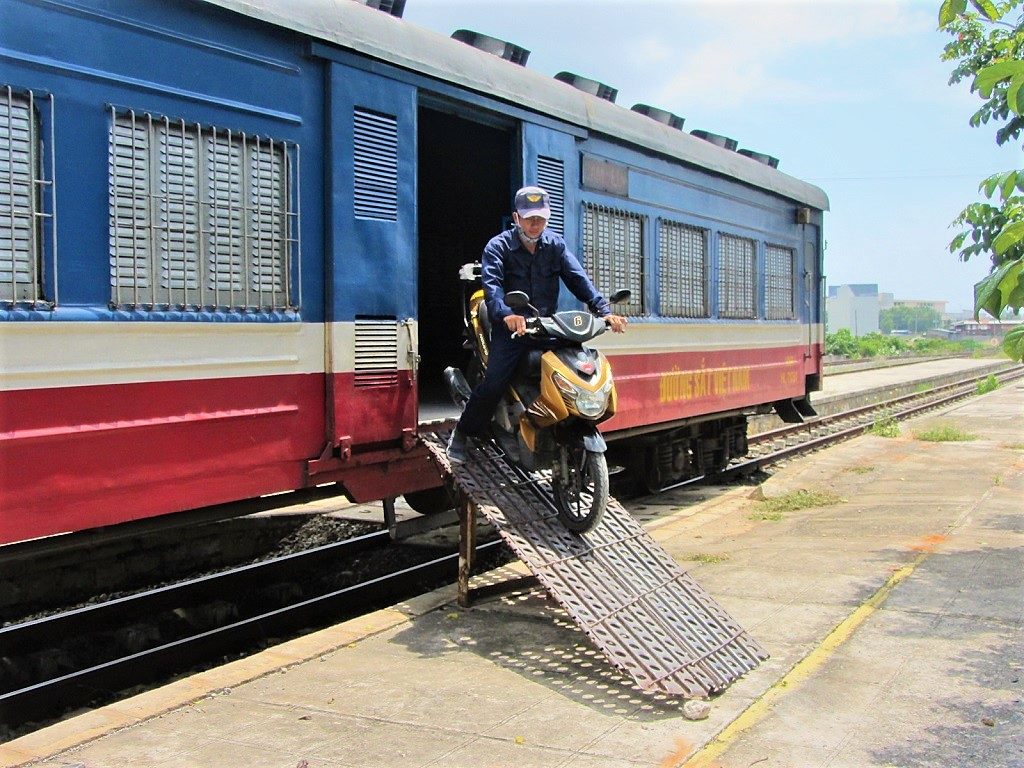
Avoid the industrial suburbs completely by taking your bike on one of several convenient train routes
Choose your Route Carefully: Another major component of reducing the stress of exiting and entering Saigon and Hanoi is to choose your route in/out carefully. There’s no such thing as a route that completely avoids busy roads, dangerous highways, or polluted suburbs, but some routes are better than others. In most cases, the more direct the route is, the more congested and polluted it will be. Therefore, oftentimes the best routes involve minor detours (away from the main arteries) and are longer in distance, but not necessarily in time. The rewards are: less traffic, less dust, and less stress. In general, the maps in my Motorbike Guides feature alternative, less congested routes in/out of Saigon and Hanoi.
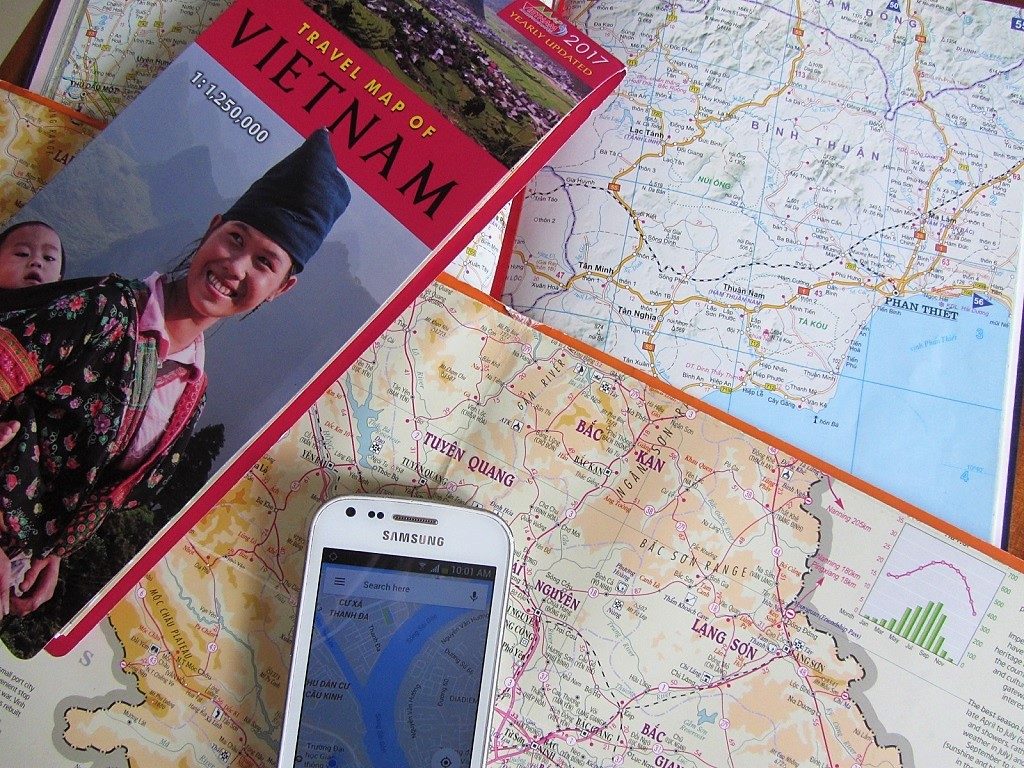
By choosing your route in/out of the city carefully you can avoid some of the worse urban & industrial areas
Choose a Different Origin/Destination City: Finally, and most obvious of all, start or end your road trip at somewhere other than Saigon and Hanoi. Potential alternative origin/destination cities include: Danang, Hue, Phong Nha, Ha Giang, Cao Bang, Sapa, Dalat, Nha Trang, Phu Quoc and many others. Although some of these places are also big cities, they’re nothing like as busy, chaotic, dangerous and polluted as Saigon and Hanoi. Most of the motorbike rental companies that I recommend on this page either have multiple pick-up/drop-off offices throughout Vietnam or can arrange pick-up/drop-off in multiple cities nationwide.
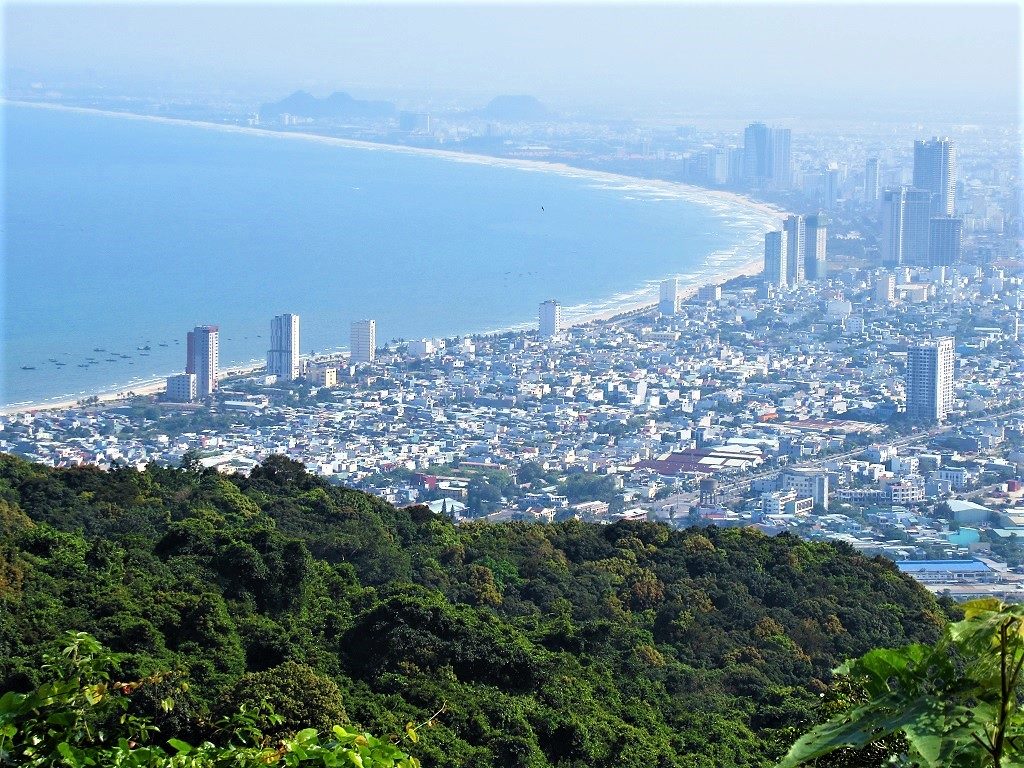
Cut out Saigon & Hanoi altogether by starting/ending you road trip somewhere else, like Danang
Disclosure: I never receive payment for anything I write: my content is always free & independent. I’ve written this guide because I want to: I think knowing when to ride in/out of Saigon & Hanoi is important & I want my readers to know about it. For more details, see my Disclosure & Disclaimer statements here
[Back Top]

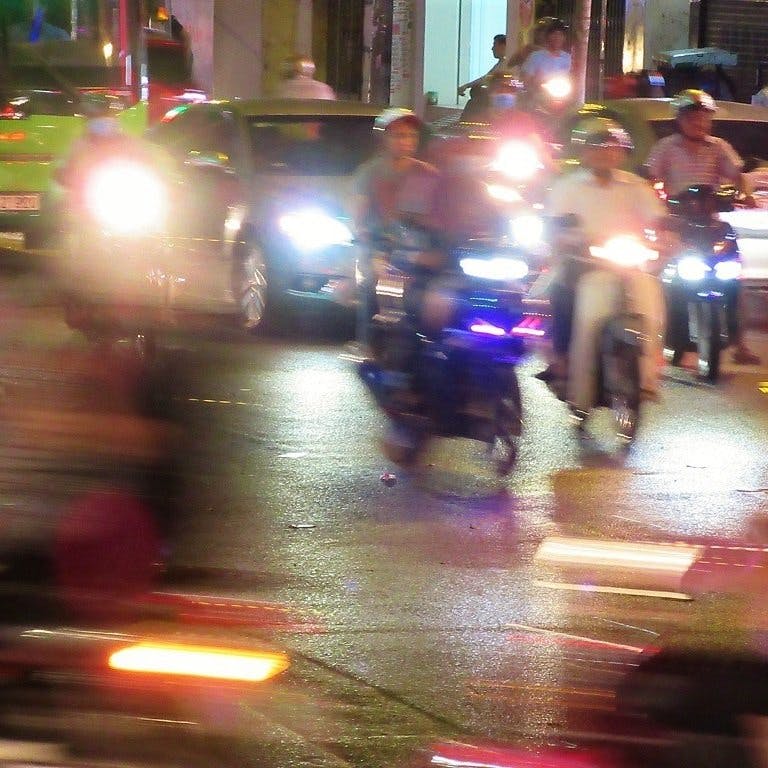
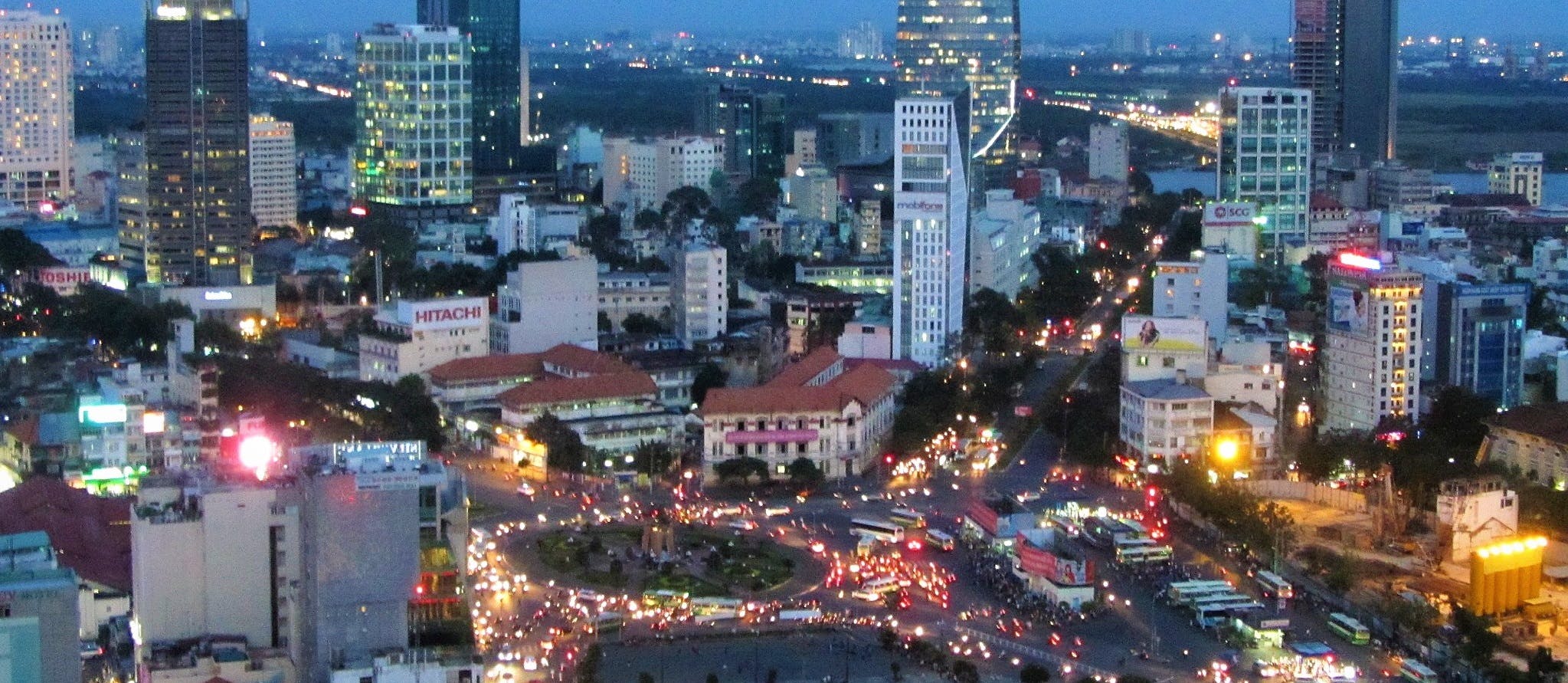
I’m going to start my northern loop in Hanoi and first stop Pu Luong. I will probably bite the bullet and ride out of Hanoi but I wanted to ask about taking my motorbike on the train to Ninh Binh as an option. Is there a train that will carry passenger and motorbike (same train) on this route? Thanks
Hi Chris,
I don’t think you can put your bike on the same train to Ninh Binh, but you can go ask at the station in Hanoi. Otherwise, see this guide for sending your motorbike on the train.
If not, I would just leave Hanoi early in the morning (4am is ideal) and take the route suggested in this guide to get out to Pu Luong. Personally, I always think it’s worth the discomfort of an early morning in order to avoid the grim 1-2 hour ride out during the rush hour.
Best,
Tom
Hi Tom!
My boyfriend and I are heading north out of Hanoi on Monday. Renting bikes from Tigit and driving up. I’m relatively new to motorcycles (took a driving course in Canada in September this year and 4 times on a Kawasaki versys 300). My boyfriend has a lot more experience.
Do you have a route you’d recommend out of Hanoi and a loop or 2 to get under my belt before doing the Ha Giang loop? Thanks a million. Your website has been super helpful!
Kacey
Hi Kacey,
For getting out of Hanoi, the best thing to do is leave at the times of day suggested in the guide above: very early in the morning, lunch time or at night. Either way, expect an relatively unpleasant first 1-2 hours.
For loops before you get to Ha Giang, you could try the Magic 8 as it’s on the way to Ha Giang. Or the Limestone Loops are great. Or browse my northern loops and see which one you like the look of.
Best,
Tom
Hey mate,
You mentioned these times don’t apply on weekends.
Is there good and bad times to head out on weekends?
I’d assume early morning before the crack of dawn is still best on a Saturday.
Cheers,
Craig
Hi Craig,
Yes, the early morning rule still applies on weekends, although midday is also a pretty good time on Sat and Sun.
Best,
Tom
Great, thanks very much will be heading out Sunday morning so fingers crossed
We cycled out go Hanoi at 9.30am (north to Thai Nguyen from Tay Ho) and it was fine…roads empty pretty quickly after the rush hour ends
Hi Kieran,
When was this? Because if it was anytime between January and late April 2020 then the lighter traffic would almost certainly be because of regulations stemming from the containment of Covid-19.
Tom
Hi Tom,
I’d recommend for those looking to get out perhaps a night before they start properly travelling up the Ho Chi Minh Road from Saigon to consider stopping in Thu Dau Mot Binh Duong, there’s a good variety of hotels and it takes about 90 minutes on average from Saigon in traffic. Waking up you’ll have about 30-40 minutes of urban sprawl but with much less dense traffic. I’m sure you know this already but I thought i’d mention it for others.
Highway 13 QL13 is the most direct route but can be full of big container trucks day and night so for the more cautious i’d recommend the back roads through Saigon. Starting from the river front head “North” up Hai Ba Trung into District 3. The road is basically the same but changes name several times to Nguyen Kim (through Phu Nhuan into Go Vap distric) -> Nguyen Oanh (Go Vap) -> Ha Huy Giap (District 12). You do have to make a little detour due to one way streets at the Pham Van Dong roundabout but if you look on Google maps it’s quite clear.
Head up Ha Huy Giap through low rise housing until you reach some traffic lights to turn to Cau Phu Long (Phu Long Bridge) after the bridge you will hit the some of QL13 but turn back on yourself onto DT745 through La Thieu, Thuan An and into Thu Dau Mot.
I’d recommend not staying in the bigger hotels here as they are overpriced for business people and for a 1 night stop are a bit too much. Bideco Hotel or Kim Bang Hotel are pretty good cheap options in the Chan Nghia district where most restaurants/ bars are or for a little more upmarket BCons hotel on the river has beautiful river views.
Alternatively I have heard of some rental companies being willing to bring bikes up to a hotel here to start your journey safely.
Hope this helps a few people.
Simon
Hi Simon,
Thanks for the input.
Yes, that’s a good idea.
I especially dislike exiting Saigon in that direction – it can be pretty horrible. I usually try to start at 4am then I’d be out of the worst of it by 5-5.30. But riding to the outskirts at night then starting again on the next morning is also a good idea.
Thanks again,
Tom
Can you recommend some reputable, 10-15 day motorbike Tour guides in Hanoi?
Hi David,
Many of the rental companies that I recommend on this page also do guided tours.
I hope this helps,
Tom